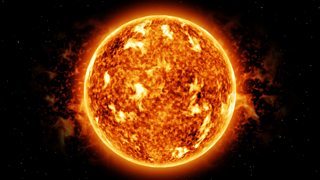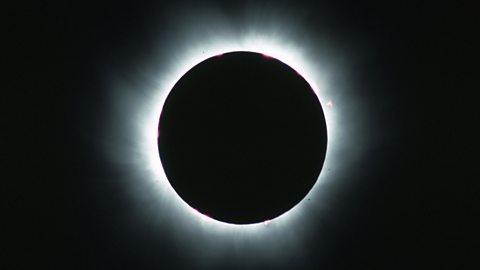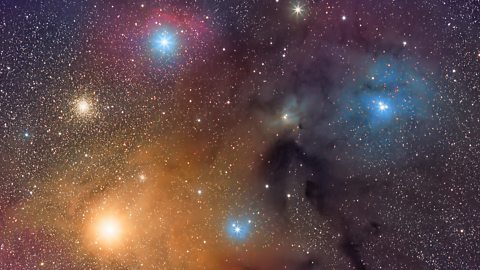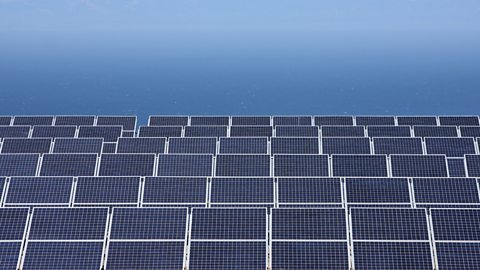Everything you need to know about solar wind
We notice its impact when earth’s magnetic field diverts it towards our poles for the northern or southern lights, or when it makes comet tails, or when it damages electrical equipment – but what is solar wind?
In Our Time explores the phenomenon behind the auroras at Earth's poles – the stream of charged particles spreading out from the Sun to the border of the solar system.

What is solar wind?
The solar wind is matter that is blown from our sun, out into the whole solar system.
This stream of material is coming out of the sun all the time – about a million tonnes per second. It’s gusty, and changes with time, but it also comes out at a speed of between one and two million miles per hour. That’s the equivalent of around 300 miles per second!
It travels through the solar system, interacting with anything that gets in its way, like the Earth or other planets.
-
![]()
In Our Time: Solar Wind
Melvyn Bragg and guests discuss the phenomenon behind the auroras at Earth's poles.
What is it made of?
The solar wind is particles in the form of a plasma – the fourth state of matter beyond solid, liquid and gas. It’s made up of hydrogen and heavier ions too, all the way up to iron ions (a bit of a mouthful).

Who discovered it?
Its existence was first suggested in the 19th century. In 1859, astronomer Richard Carrington noticed a huge flare on the sun – known as a white light solar flare – and that a day later there was a change in the earth’s magnetic field. The link was made.
But it was Eugene Parker in 1957 who came up with the first theory of the solar wind. He worked out that matter was streaming off – escaping from the sun’s atmosphere into space.
At first, Parker’s ideas were resisted and his paper was rejected. But his equations – which were relatively straightforward – proved his theory to be right. Parker’s is now a seminal paper on solar wind.
Why doesn’t gravity stop the sun’s matter escaping?
How does the matter come out of the sun? If you think about the analogy with the Earth’s atmosphere, matter doesn’t blow off into space.
Well, that’s because our planet’s atmosphere is much cooler. The hotter the atmosphere gets, the higher up the particles can rise. They have more thermal energy, and that fights against gravity.
The sun’s atmosphere is so hot that these particles essentially have enough energy to escape the sun’s gravity and get away into interplanetary space.

How the sun is a threat to our national security
Coronal mass ejections can damage communication and bring down electrical power supplies.
But why is the sun鈥檚 atmosphere so hot?
The corona – the ring around the sun that we can see when there’s a solar eclipse – is a million degrees. This is much hotter than the sun itself, which is a few thousand degrees.
So how does the energy from the sun get into its atmosphere and make it hotter?
The sun is essentially boiling on the surface. That motion on the surface tangles the magnetic field, and somehow that magnetic energy is getting up to the top of the atmosphere. Experts are still theorising as to why this happens, and we’re sending spacecraft close to the sun in the next few years to try and gain greater understanding.
It remains one of the big questions in solar physics: how is the corona being heated?

What happens during a solar eclipse?
Dr Frank Close explains how the movement of astronomical bodies causes an eclipse.
What happens when the sun鈥檚 matter hits other planets?
Any planet with an electromagnetic field, like Earth, can deflect the charged particles. This means that our atmosphere is protected from this onslaught of the solar wind.
But objects without magnetic fields – like Mars, Venus and comets – are not protected and they fall victim to solar wind scavenging, where the solar wind can actually pull atmosphere away.
We think that millions of years ago Mars used to have an atmosphere much like Earth’s, but that’s been pulled away over time.

How does the solar wind cause the northern and southern lights?
Although we’re protected by an electromagnetic blanket, sometimes the solar wind has bursts (caused by huge explosions on the sun) which are so strong that they can impinge on our protection. It can hit hard, like a shockwave, and change the structure of our magnetic field. Particles can be accelerated back down.
We’re particularly vulnerable in the polar regions and when these particles shoot back down, they energise the oxygen and nitrogen in our atmosphere, to cause the beautiful aurora that we see in the sky at night.
What happens when the solar winds blow far into space?
The solar wind blows away from the sun at huge speeds, to a distance of about hundred times the Earth’s distance from the sun, until eventually it interacts with the interstellar medium – the very tenuous gas and plasma between the stars.
This is made up of just a few particles per cubic centimetres. (If you took a cup of tea and expanded it out to the same sort of density, you’d get a volume the size of the moon.) There’s almost nothing, but not quite.
When the solar wind collides with the interstellar medium – about a year after leaving the sun – a large shockwave forms and these particles drift off into interstellar space, never to return.

Does space go on for ever?
There is a strong body of opinion which suggests that space is finite, albeit unbounded.
Do we need to worry about the sun running out of matter?
Although the sun is losing material all the time, and a million tonnes a second sounds like a lot, we don’t need to worry. It’s actually nothing in the grand scheme of things: the sun will lose less than 1% of its mass over its lifetime. It’s still got 4 billion years to go!
One thing that does cause a certain level of risk to our planet is the possibility of a corona mass ejection – an extremely large solar flare. Particles can be accelerated at very high velocities and could damage spacecraft and high-flying aircraft, and even induce large currents in our electricity system and knock out our power.
Thankfully, the Met Office is heading a whole space weather warning system so, in the likelihood of the sun causing this kind of geomagnetic storm, we can be prepared.

Is it worth having solar power?
Professor Jenny Nelson answers listener questions on solar panels.
More from Radio 4
-
![]()
In Our Time: Solar Wind
Melvyn Bragg and guests discuss the phenomenon behind the auroras at Earth's poles
-
![]()
In Our Time: The Sun
Melvyn Bragg and his guests discuss the science of the sun, source of all our energy.
-
![]()
Why you need more light in your life
What role does light play in our well-being? How does it affect our bones and our brains?
-
![]()
Nine out of this world facts about the Moon
Here are some staggering facts about our benevolent protector in the night sky.




